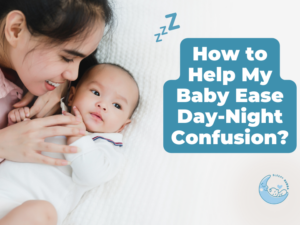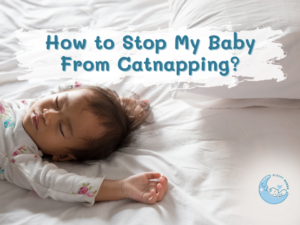Enquire Now with FREE 15 Mins Call
Why Are Wake Windows Important in My Baby’s Sleep?

Are you a parent looking to improve your baby’s sleep routine with the help of a trusted baby sleep consultant Singapore and wondering about the significance of wake windows in the process? You’re not alone! Understanding and effectively utilizing wake windows can be a game-changer in helping your baby sleep better. Here, we’ll dive into the concept of wake windows, their importance, and how they contribute to better sleep for your little one.
What Are Wake Windows?
Wake windows, in simple terms, are the periods of wakefulness between your baby’s naps and nighttime sleep. We start measuring a wake window from the moment you take your baby out of the cot until the time you put them down for their next nap or bedtime. This timeframe encompasses everything your baby does while awake, including feeding, playtime, outdoor activities, and bedtime and nap routines.
The Significance of Wake Windows
Why are wake windows essential in a baby’s sleep schedule? The duration of wake windows plays a crucial role in determining the quality of your baby’s sleep. If the wake windows are too long, your baby may become overtired, making it challenging for them to settle down and sleep. On the contrary, if wake windows are too short, your baby might not be sufficiently tired to fall asleep or stay asleep for an extended period. Finding the right balance in your baby’s wake windows is key to helping them fall asleep easily and enjoy more extended periods of rest.
When Do Wake Windows Begin and End?
A wake window starts when you take your baby out of the cot, and it concludes when you place them back into their sleeping space. It’s important to note that, in some cases, babies may continue to move or fidget for a brief duration even after being put down for a nap. This is considered rest time and is different from active awake time.
To put it in perspective, think about those moments when you’re not fully awake but not entirely asleep either. Your baby experiences similar rest periods, and as long as they are in a suitable sleep environment, this time doesn’t contribute to their wake window. Thus, there’s no need to adjust your baby’s schedule based on how long it takes them to fall asleep.
Inclusion of Feeding in Wake Windows
Feeding sessions are an essential part of your baby’s wake window, especially for newborns. It’s common for babies to doze off while feeding, but the time spent feeding should still be counted as part of their wake window. If your baby frequently falls asleep while feeding, consider extending the wake window slightly to ensure they’re tired enough for the next nap or bedtime. Pay attention to your baby’s cues to determine the right duration.
Activities During Wake Windows
Your baby’s wake windows present opportunities for various activities that can enhance their sleep quality. Let’s discuss the 5 essential components to help your baby have better nights and naps.
1. Fresh Air
Exposure to natural light, especially in the late morning and early afternoon, promotes better nighttime sleep. Sunlight aids in the production of melatonin, which regulates your baby’s circadian rhythm, helping them sleep at night. Spending time outside can be beneficial, but it’s not necessary every day
2. Free Play
Allow your baby to explore the world on their terms through free play. This independent interaction accelerates brain development and enhances problem-solving skills, contributing to better sleep.
3. Face-to-Face Interaction
Engage in uninterrupted face-to-face interactions with your baby, fostering language development and a secure attachment. Screen-free, focused time together is essential for bonding.
4. Feeding
Babies instinctively know how many calories they need over 24 hours. Offering feedings every 2 – 3.5 hours during the day, according to your baby’s hunger cues, helps ensure they receive enough calories during the daytime, reducing the need for nighttime feedings.
5. Floor Time
Physical activity is vital for your baby’s brain and body development. Activities that encourage movement, such as arranging toys to promote crawling or cruising, are excellent for tiring your baby.
Why Stretch Wake Windows?
As your baby grows, they require more awake time to become tired enough for naps and bedtime. Striking a balance between being tired enough to sleep but not overly tired is essential. The key is to observe your baby’s behavior and the quality of their naps. If they’re cranky and struggling, opt for shorter wake windows; if they’re alert and active, aim for longer wake windows.
Determining the Right Wake Windows
Figuring out the appropriate wake windows for your baby involves considering their age and observing their cues. Wake windows tend to increase as the day progresses, with the shortest window in the morning, between waking up and the first nap, and the longest before the last nap and bedtime.

Conclusion
Understanding and implementing the concept of wake windows can significantly improve your baby’s sleep quality and overall well-being. Observing your baby’s cues, individualizing their schedule, and maintaining a flexible routine can help you establish the ideal wake windows for your little one. Regularly reevaluating and adjusting these wake windows as your baby grows and develops is key to ensuring they get the sleep they need for optimal health and happiness.
If you struggle with following your baby’s wake window, consider consulting a baby sleep consultant Singapore for guidance and support on your parenting journey. At Sleepy Bubba, we are committed to helping families get the rest they need. If you’re ready to start your sleep training journey, schedule a complimentary 20-minute discovery call with us today to embark on a journey to better sleep for your family!







